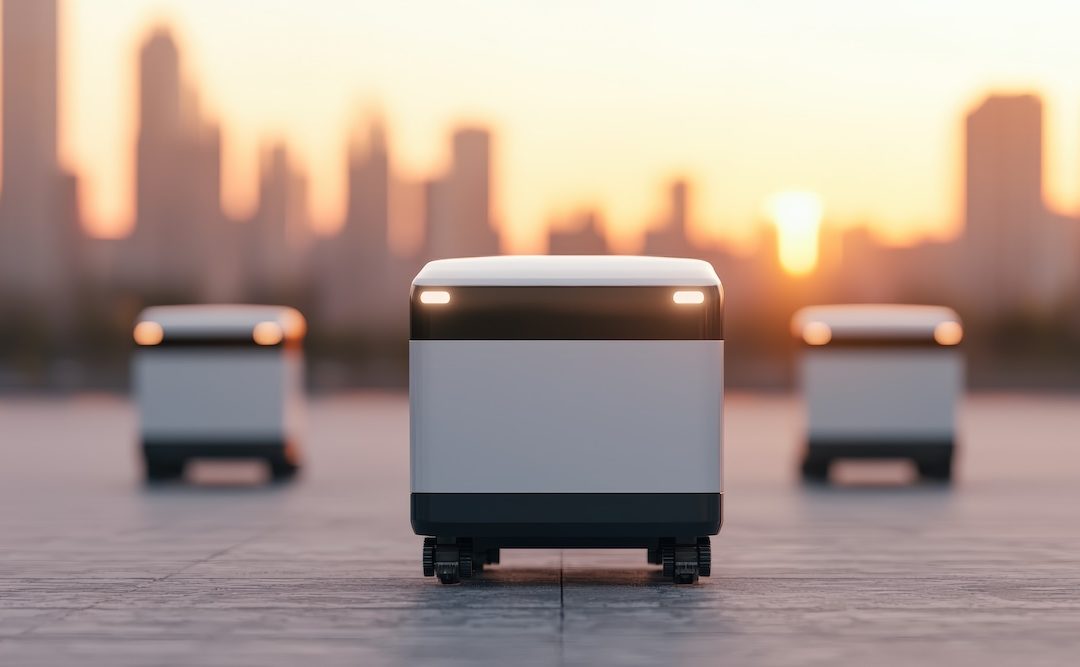If you live in one of the UK’s larger cities, you may have come across the occasional box on wheels scurrying around the streets minding its own business, without any attendant human in control. Is it some oversized remote control toy? Is it someone’s self-driving shopping buggy gone AWOL? Getting warmer, but not quite.
What you’re seeing, of course, are delivery robots. They’re becoming an increasingly familiar sight. And, according to one forecast, the more common a sight they become, the better for all of us. Expanded adoption of these autonomous carriers could add $1.3bn in value to the economy over the next decade.
So what is a delivery robot, where are they used, and what exactly is the opportunity they offer?
What is a delivery robot?
A delivery robot is an autonomous self-driving vehicle designed to carry items from one place to another. They navigate their way around (and do their best to avoid collisions) using a combination of cameras, LiDAR sensors, GPS and AI control systems. Many feature dual control systems, meaning they are capable of operating independently, but can also be monitored and controlled remotely by a person, too.
Where are delivery robots used?
Delivery robots were first used at scale in industrial settings like factories and warehouses. The earliest types operated on pre-set routes using physical track systems and became popular for moving bulk loads across large complexes, leaving forklift trucks to handle loading and unloading tasks.
Improvements in navigation technology that allowed the next generation of industrial delivery robots to move around autonomously without additional tracking infrastructure opened the door to robots being used outdoors, and that in turn triggered the adoption of robots for last mile delivery – the boxes on wheels you can now spot trundling along the streets of cities across the UK.
So far, it’s believed that the number of delivery robots deployed on the UK’s streets is in the low thousands. And most of those are either being used for home grocery deliveries (the Co-Op Supermarket is leading the way here) or parcels (DPD is the first mover in that market).
But with the likes of Just Eat and Uber Eats launching autonomous takeaway deliveries in the US and Europe, and use cases being mooted for everything from healthcare to automotive repairs, it seems only a matter of time before delivery robots are a familiar sight all over.
What’s the opportunity with delivery robots?
There are several reasons why there is confidence that the expansion of delivery robots could be so lucrative. Last mile delivery is notoriously challenging to run in a cost efficient way, especially in busy urban areas. Everyday issues like traffic congestion can completely scupper schedules, leading to frustrated customers and spiralling costs.
At a time when demand for home delivery is skyrocketing, autonomous robots present an ideal cost-saving solution. They address capacity issues as everyone from parcel firms to food services struggle to hire enough drivers. They avoid traffic problems and, if necessary, can operate around the clock. Unlike delivery drivers, robots don’t get paid for idle time. And they also create an option for dividing labour sensibly. Robots are well-suited to smaller items being transported over shorter distances, leaving vans and people to pick up larger deliveries over longer distances.
The benefits of automated deliveries also extend beyond the purely financial. Robots run on batteries and are highly energy efficient. At a time when there are concerns about squaring the growing number of delivery vehicles on the roads with environmental concerns, robotic delivery vehicles represent a cleaner, more sustainable option.
